There are few things that people agree upon, but protecting special places and things is one of them. Deciding exactly what makes a landmark or area important because of its cultural, historical, or scientific significance is the quest of the United Nations Educational, Scientific and Cultural Organization, also known as UNESCO.
Since 1972, UNESCO has been charged with the task of judging whether a place is worthy of its World Heritage Site classification. There are three types: natural, cultural, and mixed sites that are of outstanding universal value, and there are 1,037 of these sites designated by UNESCO.
In addition to being of universal value, a site must meet at least one of 10 criteria. These are:
- To represent a masterpiece of human creative genius
- To exhibit an important interchange of human values, over a span of time or within a cultural area of the world, on developments in architecture or technology, monumental arts, town-planning or landscape design
- To bear a unique or at least exceptional testimony to a cultural tradition or to a civilization which is living or which has disappeared
- To be an outstanding example of a type of building, architectural or technological ensemble or landscape which illustrates (a) significant stage(s) in human history
- To be an outstanding example of a traditional human settlement, land-use, or sea-use which is representative of a culture (or cultures), or human interaction with the environment especially when it has become vulnerable under the impact of irreversible change
- To be directly or tangibly associated with events or living traditions, with ideas, or with beliefs, with artistic and literary works of outstanding universal significance. (The Committee considers that this criterion should preferably be used in conjunction with other criteria)
- To contain superlative natural phenomena or areas of exceptional natural beauty and aesthetic importance
- To be outstanding examples representing major stages of earth’s history, including the record of life, significant ongoing geological processes in the development of landforms, or significant geomorphic or physiographic features
- To be outstanding examples representing significant ongoing ecological and biological processes in the evolution and development of terrestrial, freshwater, coastal and marine ecosystems and communities of plants and animals
- To contain the most important and significant natural habitats for in-situ conservation of biological diversity, including those containing threatened species of outstanding universal value from the point of view of science or conservation
A cultural site can be ancient ruins, historical structures, buildings, cities, monumental sculptures, and even paintings. Natural sites include places such as deserts, forests, islands, lakes, monuments, mountains, and wilderness areas. These are designated as World Heritage Sites for the collective interests of humanity.
But, World Heritage Sites aren’t only cultural achievements or natural places – they can be mixed accomplishments of humanity or evidence of our intellectual history. For example, Mexican food is so loved by the world that it is a cultural treasure and has been added to UNESCO’s Representative List of the Intangible Cultural Heritage. That’s right – tacos are that important!
If you’re a list maker, then you’ve probably already started a list of spectacular places you want to visit, but are these places World Heritage Sites? Now that you know how important they are, and how difficult the criteria is to nominate one, perhaps you’ll add a World Heritage Site to your “To Visit” list. While you’re at it, do something meaningful while you’re there.
Consider volunteering on a conservation project that helps protect a World Heritage Site for future generations. Or that helps to interpret its history. Sign up for an English teaching program that places you with indigenous people at a World Heritage Site and preserves their culture, while helping them to develop sustainable livelihoods in ecotourism. Intern with an NGO and create a buzz about a place. Or, simply visit Mexico on a gap year and enjoy the enchiladas.
With more than 1,000 World Heritage Sites (and examples of Intangible Cultural Heritage), chances are you can find a perfect spot for enriching your mind and soul. Take a look at the sampling of awesome projects at amazing places and select one to visit today!
Featured Volunteer Abroad Programs
Trending Guidebooks
Volunteering Abroad AFTER the Coronavirus Outbreak
Read 25,953 times2025 Best Internships Abroad: Medical Care, Marine Biology & More
Read 89,707 timesVolunteer in Australia: Animals, Conservation, Ranching and More
Read 49,409 times2025 Best Volunteer Abroad Programs, Organizations, and Projects
Read 3,649,003 times
International Volunteer HQ (IVHQ) supports internship placements in addition to meaningful volunteer experiences abroad. Founded in 2007, IVHQ partners with local NGOs and organizations on a variety of programs in Asia, the Pacific, Africa, Europe, the Caribbean, and Latin America. IVHQ is a trusted, low-cost volunteer program, with fees starting at $180. To date, IVHQ has placed more than 85,000 volunteers around the world on programs that provide support for education and childcare, conservation and wildlife, community building, and medical care. Interns and volunteers are invited to stay abroad one week to six months to gain the most from their experience.
Join International Volunteer HQ in Belize and learn how to scuba dive on the largest barrier reef in the northern hemisphere, exploring offshore atolls, mangrove forests, lagoons, and estuaries.
Inscribed as a UNESCO World Heritage Site in 1996, the Belize Barrier Reef Reserve is one interconnected system that consists of seven protected areas: Bacalar Chico National Park and Marine Reserve, Blue Hole Natural Monument, Half Moon Caye Natural Monument, South Water Caye Marine Reserve, Glover’s Reef Marine Reserve, Laughing Bird Caye National Park, and Sapodilla Cayes Marine Reserve. These areas each illustrate the evolutionary history of reef development and provide a habitat for threatened species, including marine turtles, manatees, and the American marine crocodile. The site has been listed as endangered since 2009 due to mangrove cutting and overdevelopment.
On this placement, you’ll help to protect the marine ecosystem of Belize, while you become a certified scuba diver off the coast of Placencia. Once you’re certified, you’ll work with marine conservation biologists, diving the clear, calm waters of Belize as you research and gather data on coral reefs.
Your help is needed on this vital project to help with coral reef survey and research. UNESCO reports that the World Heritage coral reefs are likely to disappear because of bleaching by 2100 unless CO2 emissions drastically reduce. Bleaching is a stress response that causes coral animals to expel the algae that feed it.
This dive-based research project teaches you how to safely contribute scientific information as you earn your PADI Open Water scuba certification. You’ll make 13 dives each week, including a night dive. Research activities include:
- Coral reef surveying
- Invasive species removal
- Marine species survey
- Whale shark research
Accommodation is at a volunteer house with basic but comfortable rooms and cabanas. Orientation is held on Mondays, and you’ll be introduced to the program, its rules, and expectations, health, and safety guidelines, and learn about the marine ecosystem. Fees for dive certification training are extra, and advanced training is available. As a volunteer, you’ll need to bring your own mask, snorkel, (3mm) wetsuit and boots. You’ll need Open Water Dive Certification to participate in this project and can be attained while volunteering on the island, or in advance of your trip.
Spend your weekends on the water either kayaking or on a paddleboard, or head inland and go exploring. There are prehistoric Mayan archaeology sites to visit, spice farms, and waterfalls within a day’s trip. Program fees begin at $690 for one week. More information is available here.
African Impact places volunteers and interns on meaningful opportunities in 12 countries throughout Africa and has helped more than 12,500 people travel and volunteer overseas since its founding in 2004. Its goal is to provide volunteers with humanitarian experiences while they’re in-country on responsible, sustainable projects. African Impact ensures community buy-in by working with local stakeholders and forming partnerships with governments.
When the wide Zambezi River rushes down a basalt gorge in Zambia, the rainbow mist can be seen more than 12 miles away; such is the grandeur and majesty of the World Heritage Site of Victoria Falls / Mosi-oa-Tunya. This exceptional geological and geomorphological feature is significant as one of the world’s greatest sheets of falling water, measuring more than a mile wide.
It is also the breeding site for four endangered and migratory bird species, including the Taita Falcon and the Black Eagle. Within the waterfall’s splash zone is a riverine “rainforest” with a fragile ecosystem. It also has yielded ancient stone artifacts made by early humans, dating to three million years! Victoria Falls is a treasure of two countries, protected under the National Heritage Conservation Act and the Zambia Wildlife Act on the Zambia part, and the Zimbabwe Parks and Wildlife Act on the Zimbabwean side.
Travel to Victoria Falls for its immense beauty and to see one of the seven natural wonders of the world, but stay for a while longer and help African Impact bring hope to a community where healthcare resources are limited when you volunteer on a medical program in Zambia. This project gives you valuable healthcare experience, placing you alongside professionals in Livingstone and helping to provide care for low-income communities. Qualified medical/healthcare professionals and pre-med students can shadow personnel and provide basic patient care under supervision, complying with the Zambian Medical Council requirements.
Other opportunities include conducting home-based visits and assisting in the clinic in outpatient care, HIV/TB services, pharmacy, maternity, and pediatrics. You’ll stay in the Livingstone Backpackers compound, a five-minute walk from Livingstone’s town center. You’ll have access to a swimming pool, hot tub, lounge and bar area, and a full climbing wall. Bedrooms are dormitory-style and accommodate up to eight people. The house has 24-hour security and individual lockers for your valuables.
Livingstone is home to many stores and restaurants, and on weekends, you can visit any of the nearby national parks. Choose a safari and view the wildlife. Program fees begin at $1,372 for 10 days, and you may stay up to 12 weeks. Learn more here.
Maximo Nivel offers volunteer trips, Spanish language learning programs, and teaching opportunities to students, volunteers, and other travelers to Latin America. Founded in 2003, it organizes a variety of travel opportunities, including training and certification for ESL teachers, in Costa Rica, Guatemala, and Peru. Its mission is to enable people to experience the world through education, adventure, and cultural travel. More than 25,000 people have traveled abroad for learning, adventure, and volunteer opportunities with Maximo Nivel, taking part in high-quality, safe, and affordable programs.
Antigua is a historically significant city in Central America and a World Heritage Site. Originally the home of the Mayans, the region was settled through conquest by the Spanish in 1524 as Santiago de Guatemala. It is prone to earthquakes and volcanic eruptions, but its significant monuments are still preserved as ruins that you can visit. Antigua’s architecture was inspired by the Italian Renaissance, and it contains several outstanding monuments.
Its buildings display a stylistic variation known as Barroco antigueño, which is distinctive because of the use of decorative stucco for interior and exterior ornamentation, main facades with a central window niche, massive buildings, and low bell towers designed to endure earthquakes. Significant historical buildings in Antigua include the Palace of the Captains General, the Casa de la Moneda, the Cathedral, the Universidad de San Carlos, Las Capuchinas, La Merced, and the Santa Clara. Its architecture is well preserved because it was abandoned for nearly a century. People began to repopulate Antiqua in the mid-1800s when increased agriculture – specifically coffee – brought new money into the region.
The city is a popular tourist destination and there are great little shops and boutiques where you can buy souvenirs and traditional ceramics, textiles, and handicrafts. The Guatemaltecos are proud of their indigenous cultures and the country’s name means “Land of Many Trees,” and its abundant and diverse ecosystem.
Join Maximo Nivel on a conservation project with sustainable practices, and learn about and support responsible farming methods in Guatemala. Volunteer to help coffee growers near Antiqua who need more hands in the field to maintain optimal production. Working on an organic farming placement, you’ll learn each step of the production process, including planting, harvesting, processing, and packaging. Volunteers work at farms close to the Maximo Nivel institute, just outside of the city of Antigua. Staff visit the placement sites and check on you during your stay, and you can volunteer for one week or longer for fees starting at $645. Click here to apply!
Global Vision International (GVI) is a respected and prominent volunteer organization, placing more than 2,000 people on volunteer and intern abroad projects each year. Opportunities include high impact volunteering from one week and up, and internships for those looking for career development. Founded in 1997, GVI operates responsible, sustainable, and award-winning trips throughout the world, each with objectives geared toward achieving the United Nations’ Sustainable Development Goals. Volunteers from all ages contribute to the impact and success of its projects.
The town of Luang Prabang in Laos is a World Heritage Site because of its well-preserved townscape that blends the distinctive architectural cultures of Lao urban structures and European colonial settlers of the 19th and 20th centuries. Located in northern Laos, the lush, green town is situated on a mountainous peninsula formed by the Mekong and the Nam Khan rivers. The center of Buddhism in the region, Luang Prabang once was known as the capital of the powerful Silk Route kingdom of Lane Xang (Kingdom of a Million Elephants). Following the 1893 establishment of the French Protectorate, the country divided into three independent kingdoms and Vientiane eventually became the administrative capital.
The built heritage of Luang Prabang is considered to be in harmony with its environment, with traditional Lao houses made of wood and bamboo, coated with wattle and daub. Colonial buildings are in contrast, constructed with brick and featuring balconies and decorative features. Temples are built of stone and well maintained, and there are natural green spaces in the heart of the city, and along the riverbanks.
Volunteer with GVI while you’re visiting the ancient city of Luang Prabang, and teach conversational English to novice Buddhist monks and other students. You’ll provide your students with mentoring and support while you learn about Lao culture, history, food, religion, and language. Your help with their basic English speaking skills can help them increase their opportunity for future employment and their quality of life.
You’ll stay in a centrally located guesthouse, with shared rooms and basic amenities, and all meals. Spend weekends visiting the city’s temples and sights, including the Kuang Si Waterfall, which is an excellent place for swimming. Take a ride on the Mekong River and visit the historical Pak Ou Caves with its thousands of Buddha images. Enjoy shopping at local markets, and watch weavers at work on your walks. Kayak the Nam Khan River and explore village life along the way. Fees start at $1,995 for two weeks. Read about GVI’s program and apply here.
Global Volunteers places travelers on volunteer trips, internships, gap years, and teaching opportunities worldwide. Working in 16 countries and in the areas of mentoring children, teaching English, assisting with health care, community gardening, and building development, Global Volunteers has placed more than 33,000 volunteers of all ages on impactful programs. Founded in 1984, Global Volunteers is one of the longest-running volunteer vacation providers in the world, and was granted Special Consultative Status with the United Nations in 1999, and has partnered with UNICEF since 2008.
Havana was founded in 1519 on Cuba’s west shore by Spanish colonists, after displacing its native populations. It grew to become one of the Caribbean’s largest shipbuilding centers by the 17th century, and the money poured in. Grand buildings in the Baroque and Neoclassical styles dominated the city’s center, as well as theaters and churches. Old Havana, now a World Heritage Site, is filled with historical landmarks, including La Cabaña, the Cathedral of Havana and the Great Theatre of Havana. Its private houses boast arcades, balconies, wrought-iron gates, and internal courtyards.
Throughout the years, Old Havana has retained its original urban layout, and its continuity of styles make it the most impressive city center in the Caribbean. It contains five large plazas, each with its own architectural character: Plaza de Armas, Plaza Vieja, Plaza de San Francisco, Plaza del Cristo, and Plaza de la Catedral.
Travel to Cuba and provide community support in Old Havana with Global Volunteers. Assist with projects such as teaching conversational English, senior care, working in a craft co-op, performing light labor, or helping with a community garden.
Another project will have you assisting with a noontime meal program for seniors, helping to peel and cut vegetables, pick rice, and assist with meal preparation, serving, and clean up. Continue your support for seniors with an elder care program at churches, entertaining and engaging people by conversing in English, playing games, offering physical therapy, and engaging seniors in other ways as needed.
Sign up for a people-to-people activity offered by Global Volunteers in Cuba that heightens your cultural understanding of the people through guided tours of museums, theatrical events, salsa dance lessons, and visiting the shops and stalls of artisans. Take Spanish lessons, and visit Ernest Hemingway’s home in Cuba! These additional activities will help you build a bridge to friendship with Cuba. Your service contribution fees begin at $2,995 for one week and are tax-deductible for U.S. citizens. Click here to learn more and to register.
Travel Lightly When You Go
There are a lot of reasons to visit a World Heritage Site, but if you do, remember to keep your impact to a minimum. Because these special sites are fragile, they are threatened by their very popularity. Tourists by the millions flock to some of the most sensational heritage sites, to the point where some countries have lobbied to have their assets, such as Australia’s Great Barrier Reef, removed from the World Heritage List. There are problems with too much attention, such as pollution and traffic erosion.
On the other hand, poorer countries could use some love, but the process of bidding for a site listing is often lengthy and costly, putting them at a disadvantage. As a citizen of Planet Earth, it’s your right and your responsibility to help care for the world’s most remarkable places. Travel lightly when you go.












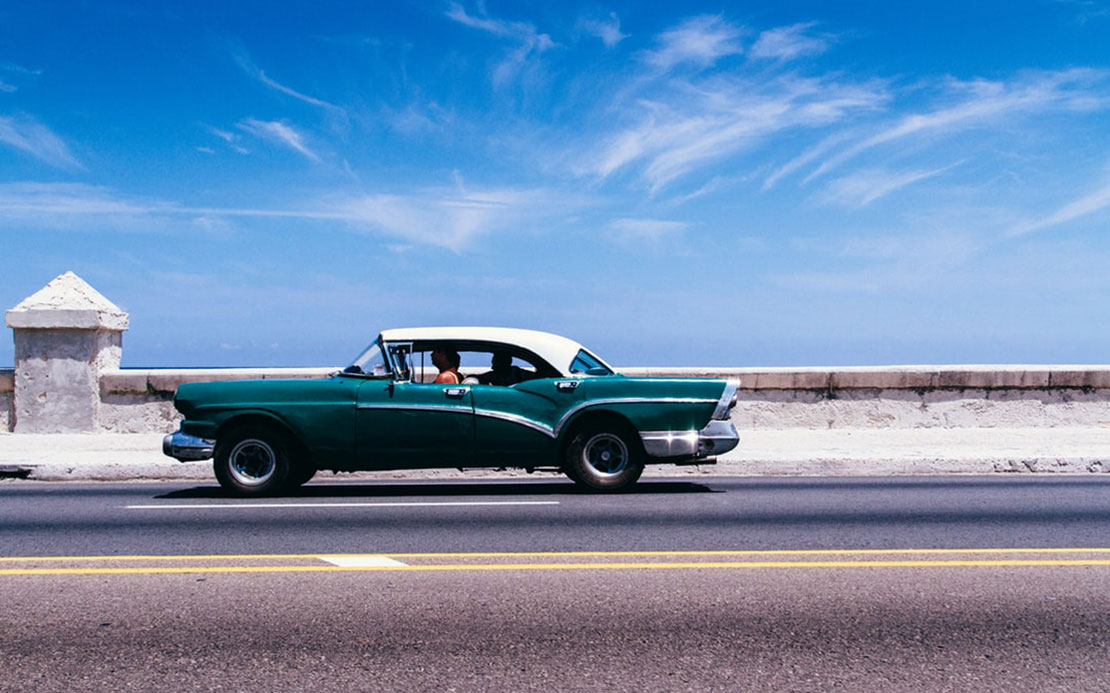
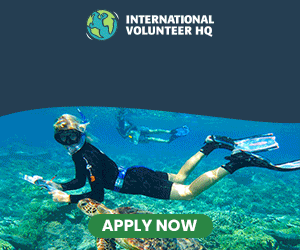
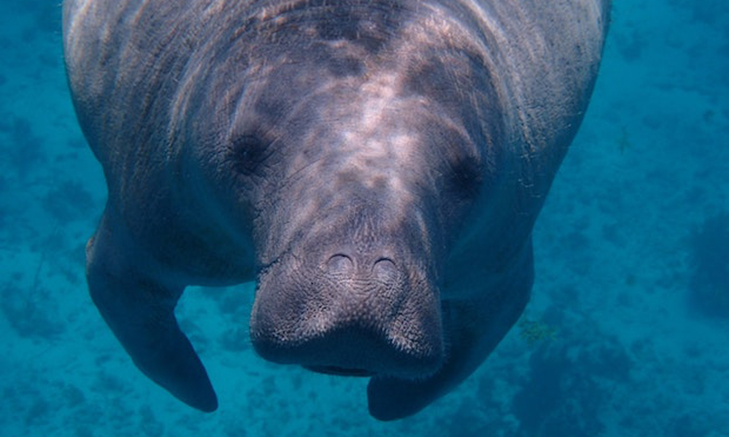

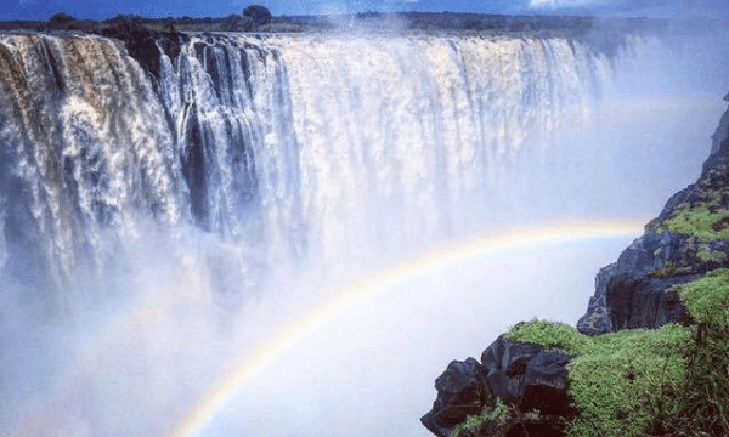

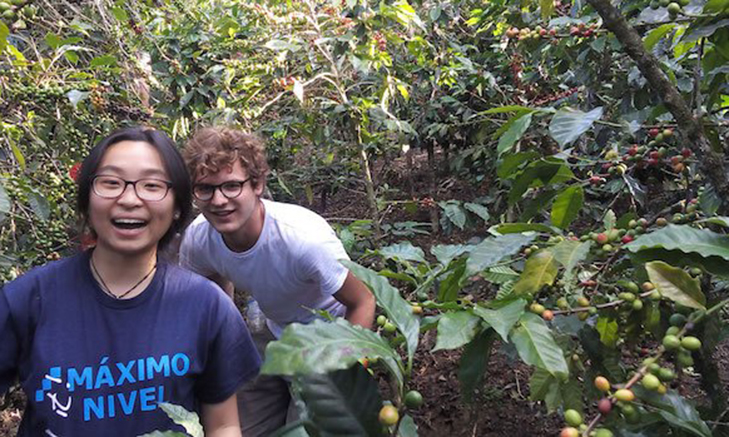

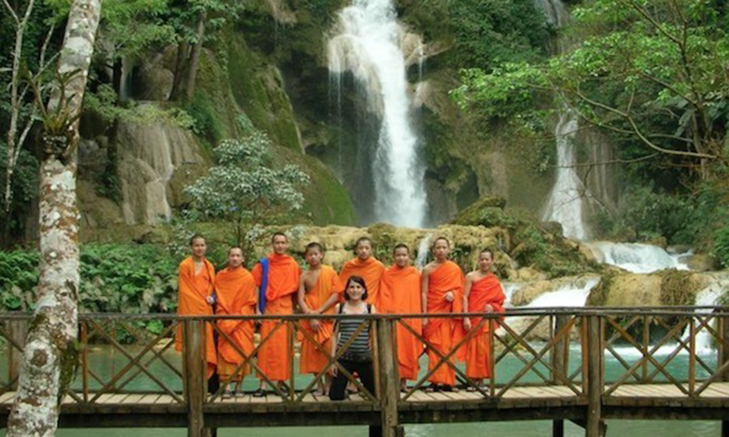
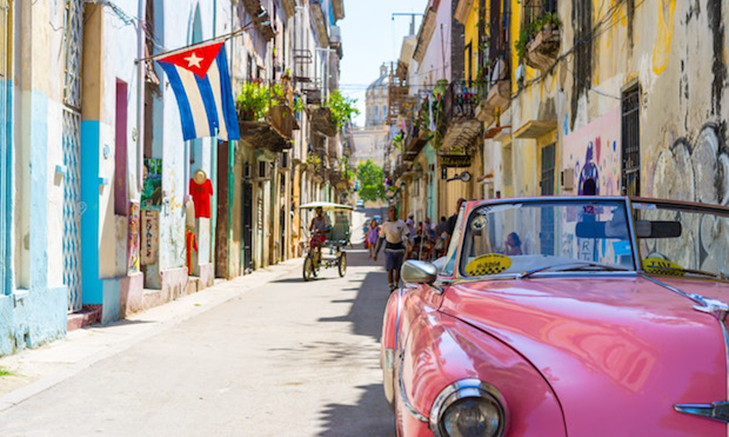
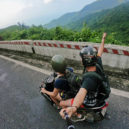
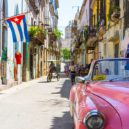
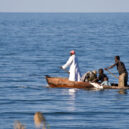
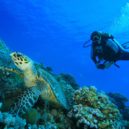






Robin Van Auken · Writer
Robin is a researcher, writer, and a registered professional archaeologist, a skillset she uses every day as a cultural communication specialist with Hands-on Heritage. Her projects connect communities with an emphasis on interpretation and education and conserve cultural and environmental legacies.